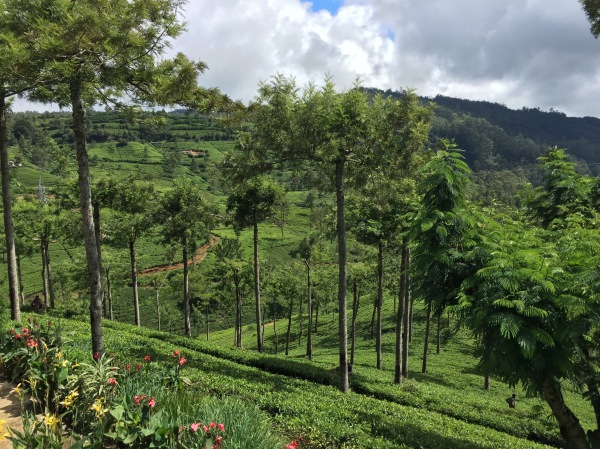 “Good tea is not made in the factory. Good tea is made in the fields. If you do not get good leaf you cannot get good tea.” — Lalith, a good friend in the tea business while visiting his homeland of Sri Lanka with Ed and Wendy Bjurstrom of Compassion Tea Company
“Good tea is not made in the factory. Good tea is made in the fields. If you do not get good leaf you cannot get good tea.” — Lalith, a good friend in the tea business while visiting his homeland of Sri Lanka with Ed and Wendy Bjurstrom of Compassion Tea Company
We love tea. It’s true. Learning about this fabulous drink makes us a little bit giddy. And there are few things in life that bring us more happiness than a tea tasting! (Of course, this is second to serving God and His people in need!) Several members of our team have now been to Sri Lanka to learn about the tea process from plant to your cup. We’d love to share some of our knowledge with you.
The complicated process of making tea is thousands of years old. And among the superior quality teas such as the ones we carry, a vast majority of the process remains done by human hands. Let’s look at the process as it is done in Sri Lanka.
Currently, in the world tea market, there are 70 different tea growing areas around the world.China produces 39% of the world’s tea. India produces 23.5% and Kenya produces 8%. Sri Lanka follows with 6% of the tea market production. Teas from Sri Lanka are called Ceylon teas. About 400 tea plantations operate in Sri Lanka and roughly 20% of the land in Sri Lanka is under tea cultivation. There are about 650 tea factories. About 340 million kilograms of tea are produced in Sri Lanka each year.
Despite the statistics that say tea is one of the fastest growing beverages in the United States, the US imports a modest 2% of Ceylon tea. Turkey and Russia import the majority of the Ceylon tea.
All tea comes from the Camellia Sinensis plant. How the leaves of the plant are processed creates the different types of tea such as black, white, green, and oolong. Herbal teas are a misnomer in that they do not come from the Camellia Sinesis plant but are based on flowers, fruits, the shavings of the rooibos plant, and other leaves.
The Camellia Sinesis plant grows naturally into a tree, but in order to cultivate it effectively, plants are maintained as shrubs. This also makes the harvesting more comfortable for the tea pluckers. Climate, soil, and elevation play an important role in the quality and quantity of the tea produced. The plant grows best in tropical climates that see a lot of rain and at higher elevations.
When the tea is harvested, workers enter the fields to hand-pluck the top youngest leaves and buds. A typical “pluck” is to pull two leaves and a furled bud from the top of the plant. It takes about 4.5 lb. of fresh tea leaves to produce 1 lb. of the tea you brew for your cuppa.
Typically, men oversee the work of the tea pluckers as they are called. The tea pluckers, who are women, begin their days in the fields around 8:30. They have a morning break and a two-hour lunch break. They then pick in the afternoon until about 4:30. The women carry a special basket on their backs. This lightweight basket makes it easier for them to use both hands for plucking. They then toss the leaves in the basket. Measuring sticks keep the plucking to a consistent level. Once an area of the field is plucked, it won’t be picked again until at least 8 days have passed.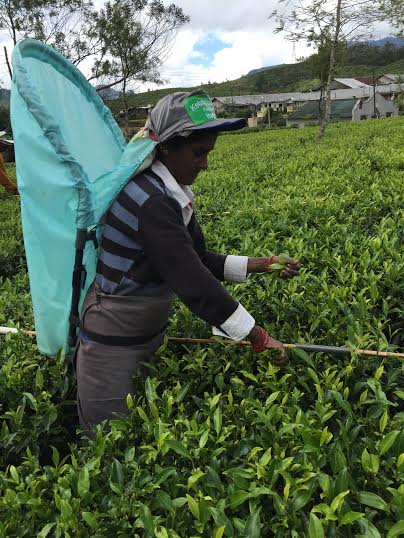

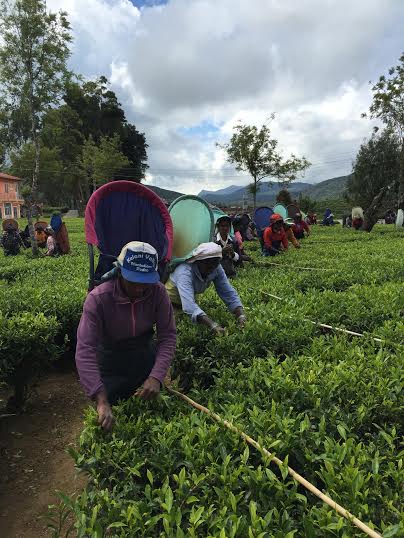
On the Pedro estate where Ed and Wendy visited this past January, the pluckers make 680 rupees ($4.50) per day minimum and get free housing and medical care, child care and maternity as well as 21 days holiday pay. They are compensated for extra leaves picked and are given free food for their children and free burial. A health care clinic on the plantation provides the majority of their medical needs. The workers are well cared for and make a good living by Sri Lankan standards. Sadly many of the workers who stay on the plantations for free do not even work on the tea plantations, but prefer to work elsewhere (like farming) where they make more money. But they cannot be kicked off the plantation. Out of the 7,500 people who live on the Pedro tea estate, only 1,500 work in tea plucking or processing, yet all 7,500 get free housing and benefits! This poses a real challenge for the plantation owners and may lead to problems in the future as world demand for Ceylon tea lessens and as costs rise.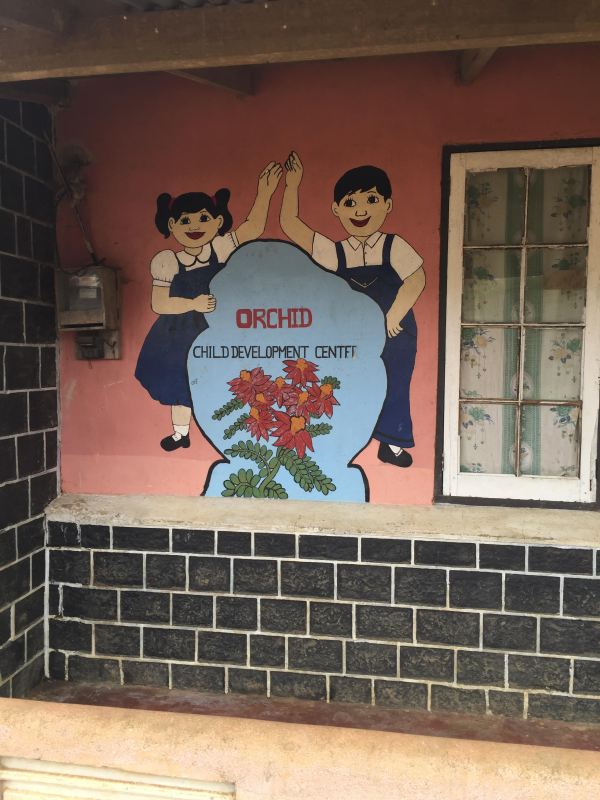
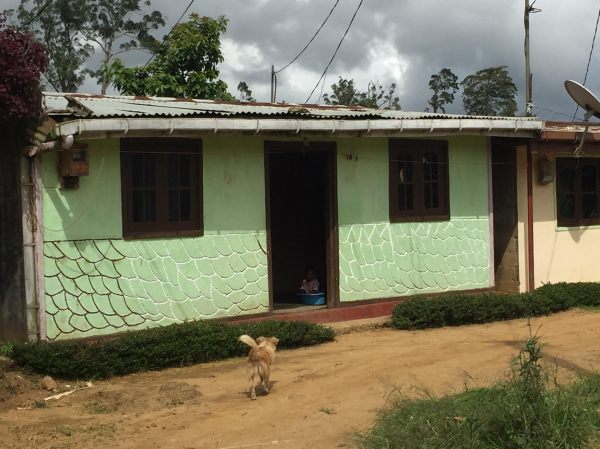

Once the tea is plucked it is carried to be weighed. Because extra bits of leaves and twigs accidentally get in the baskets, the tea pluckers sort through their baskets before they take them for weighing. The tea pluckers are given bonuses for extra tea plucked. Once the tea is sorted and weighed, it is ready to head to the processing plant. Three times a day, trucks carry the tea from the fields to the processing factories. Because Ceylon is a black tea, it will undergo a fair amount of wilting and oxidizing in order to give the tea the rich black taste we know and love.
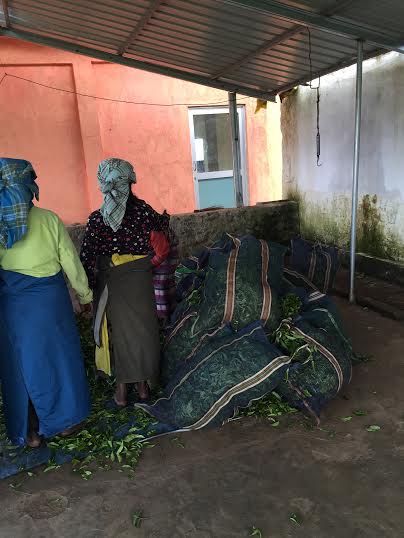
Our Earl Grey, English Breakfast, Decaf English Breakfast, Black Lemon, Cinnamon Orange Spice, and Black Chai teas all contain at least 90% Ceylon tea from Sri Lanka.
Green and white teas are minimally processed from here. Black teas, like the Ceylon in Sri Lanka, undergo 10 steps to provide the proper oxidation of the leaf to achieve the black color and flavor that makes Sri Lankan Ceylon so delicious. Here is a pictorial guide from the Lover’s Leap Tea Factory at the Pedro Estate of Sri Lanka where Ed and Wendy visited last January.
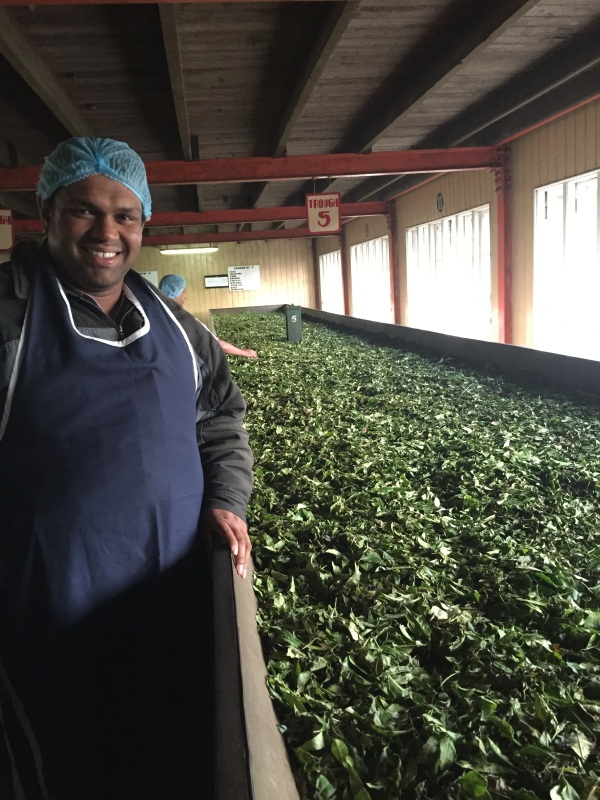
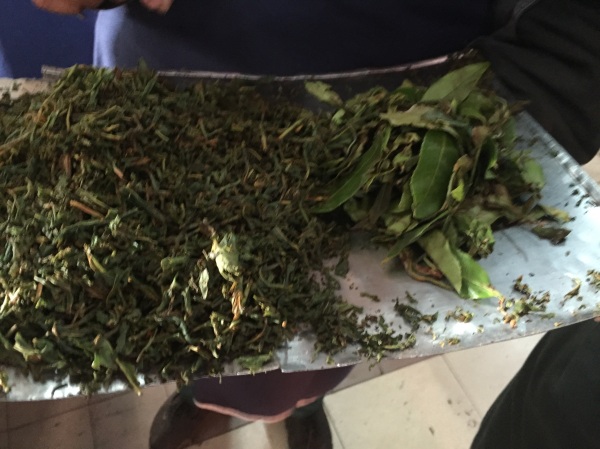 Step 1: Withering Process- Air comes up from the bottom of the withering bins, and the leaves will wither for 12 hours. These leaves begin the withering as soon as they come in from the fields. After withering, the leaves go through a tunnel to the rolling room.
Step 1: Withering Process- Air comes up from the bottom of the withering bins, and the leaves will wither for 12 hours. These leaves begin the withering as soon as they come in from the fields. After withering, the leaves go through a tunnel to the rolling room.
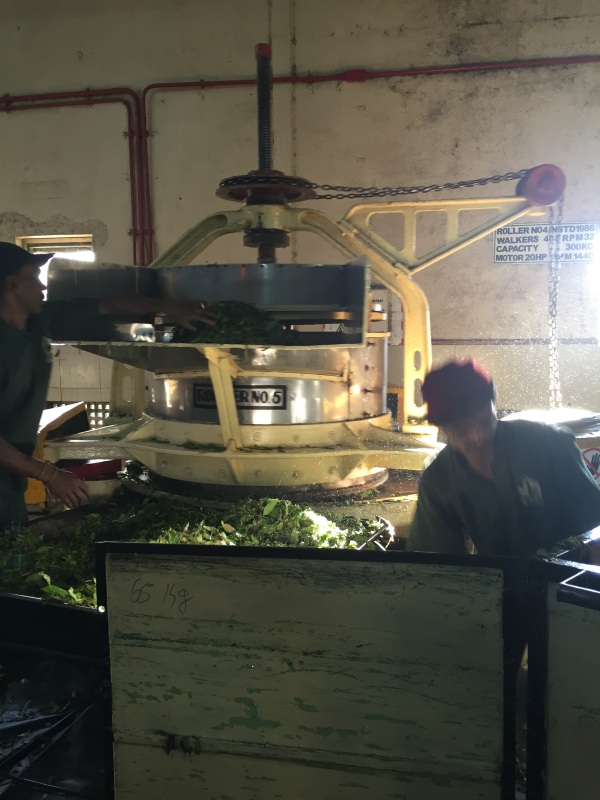
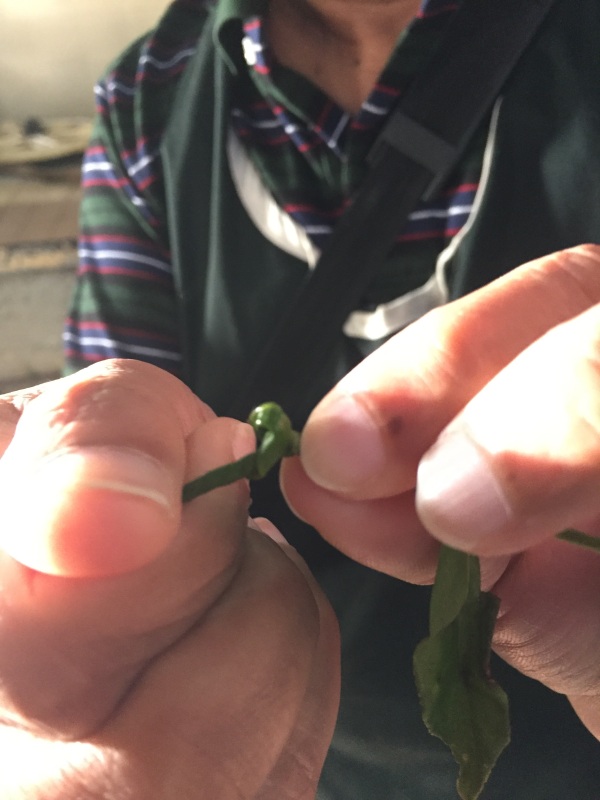 Step 2: Rolling – The leaves are placed in the roller for 20 minutes. Oxidation is taking place. Rolling bruises the leaf and makes the juices come to the surface. Left: The leaves on the left are rolled, and the leaves on the right are withered only.
Step 2: Rolling – The leaves are placed in the roller for 20 minutes. Oxidation is taking place. Rolling bruises the leaf and makes the juices come to the surface. Left: The leaves on the left are rolled, and the leaves on the right are withered only.
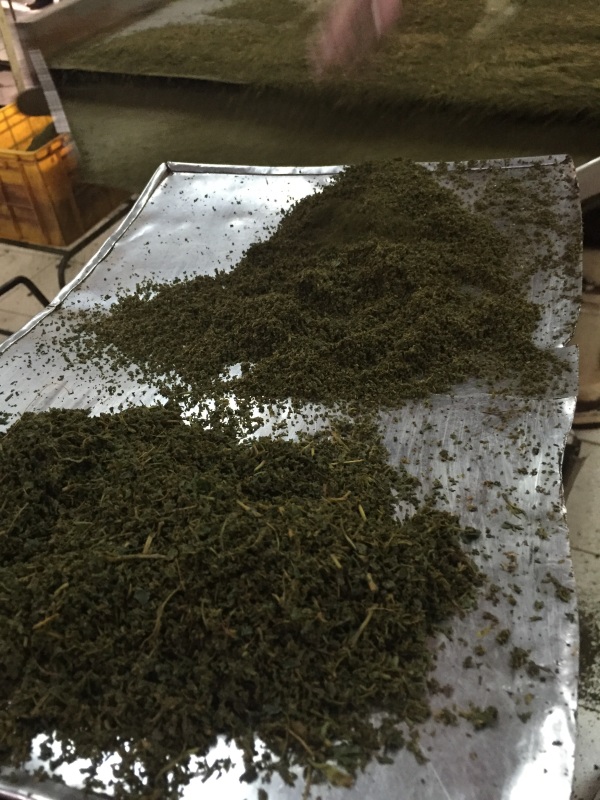
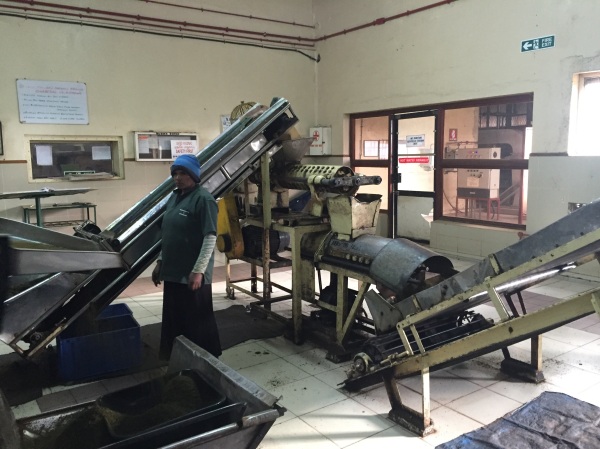 Step 3 – Rotor Vane – After the tea goes through this “mincemeat grinder” it will be much finer, like wet grass. Tea can go through up to 4 turns on the rotor vane. Above: The leaves on the top are ready to go to dryer, but the leaves on the bottom must go through the rotor vane again.
Step 3 – Rotor Vane – After the tea goes through this “mincemeat grinder” it will be much finer, like wet grass. Tea can go through up to 4 turns on the rotor vane. Above: The leaves on the top are ready to go to dryer, but the leaves on the bottom must go through the rotor vane again.
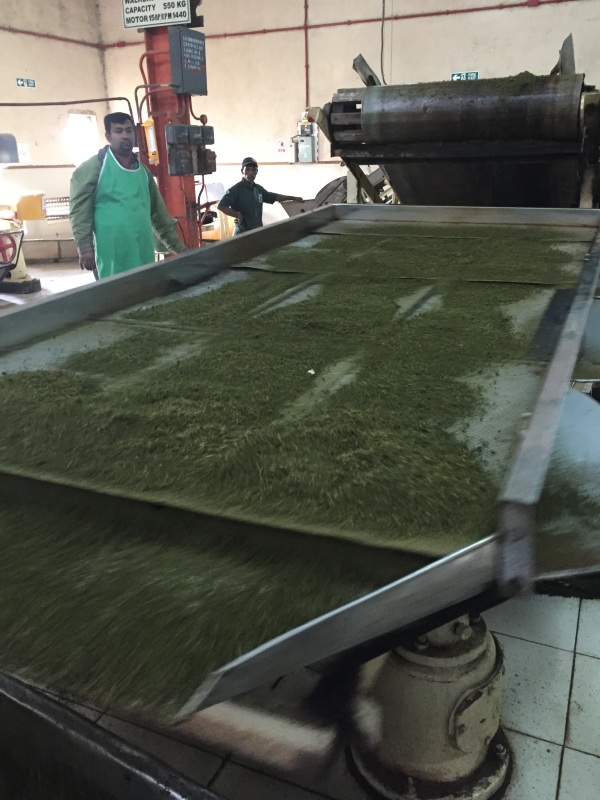 Step 4: Shaker – The tea leaves that are ready to go to the dryer will fall through while the larger leaves go through another rotor vane.
Step 4: Shaker – The tea leaves that are ready to go to the dryer will fall through while the larger leaves go through another rotor vane.
 Step 5: Drying step – The tea will go through a drying oven at 125 F for 21 minutes. A wood fired boiler is used to heat the ovens.
Step 5: Drying step – The tea will go through a drying oven at 125 F for 21 minutes. A wood fired boiler is used to heat the ovens.
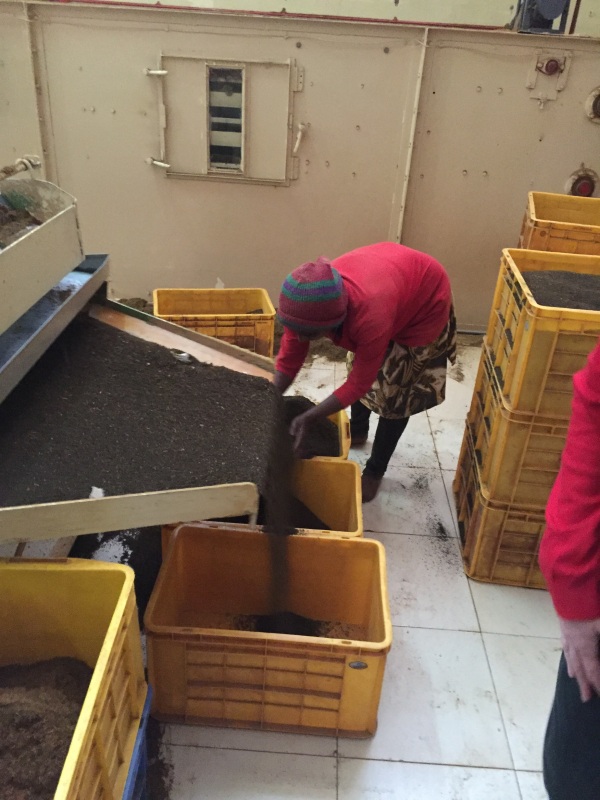

Step 6: Electrostatic separators are used to pull out fibers and stems from the tea. After separating, it drops into the yellow buckets. At this point the tea is finally stable. You can see that it is really starting to look like black tea by now.
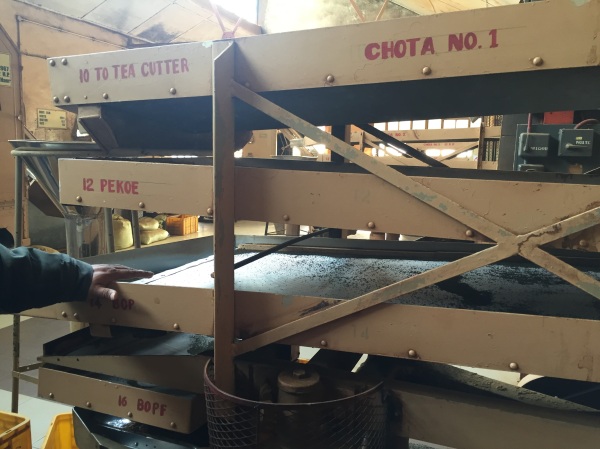
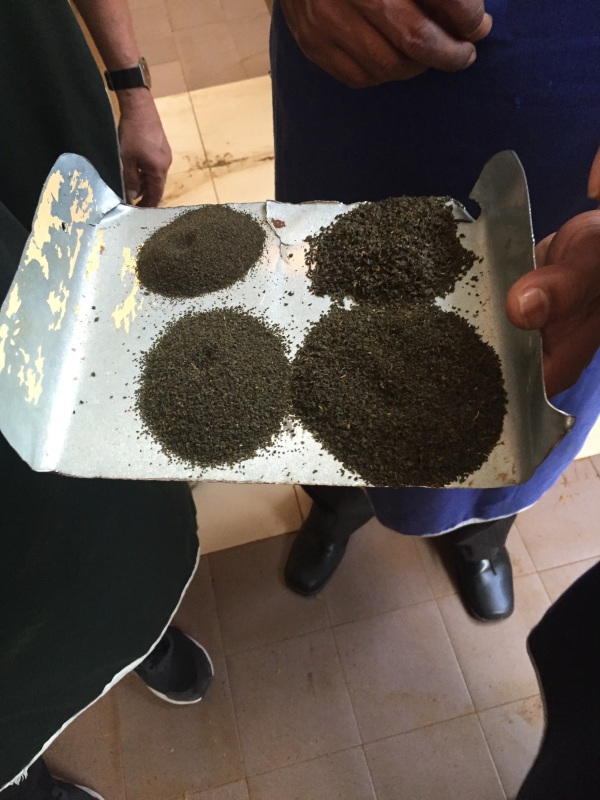 Step 7: Grading – Tea is graded by size using the Chota sifter. There are 4 sizes: 10, 12, 14, 16. Number 16 (BPOF) will be the smallest and the strongest tea.
Step 7: Grading – Tea is graded by size using the Chota sifter. There are 4 sizes: 10, 12, 14, 16. Number 16 (BPOF) will be the smallest and the strongest tea.
Step 8: The Color Separator is another way to remove more stems and fibers. It also separates the tea into different grades.
 Step 9: Bulking – The tea goes through the hole for the bulking step. This is where they blend several harvests together.
Step 9: Bulking – The tea goes through the hole for the bulking step. This is where they blend several harvests together.
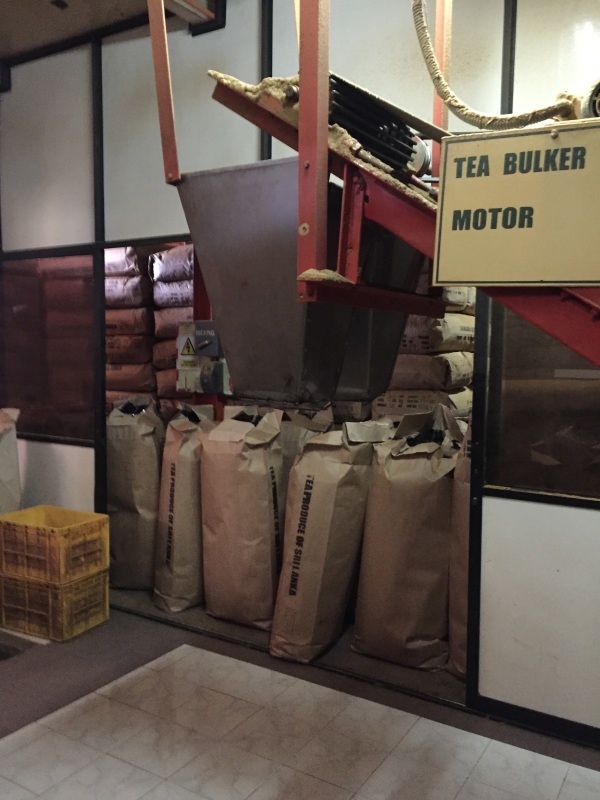
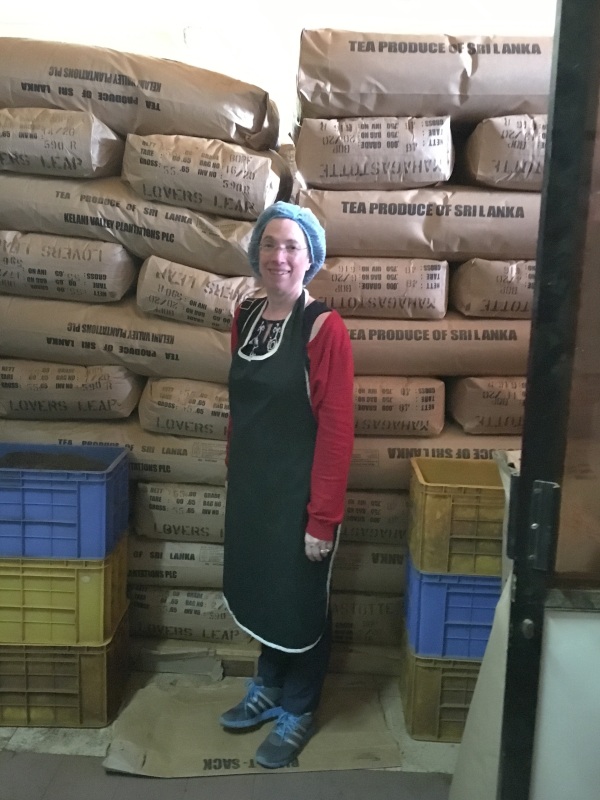
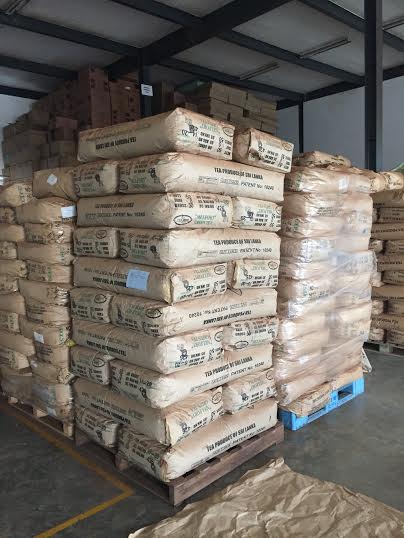
Step 10: Bagging. The teas are put into bags which each hold 33 kilos. Then, the tea is sent off to the auction house or other tea blenders to make specialty teas.
This tea factory in Colombo, Sri Lanka, gets tea from the tea estates and makes their own blends for shipping to countries like Japan. Below is a series of photos showing a huge blending machine from top to bottom.

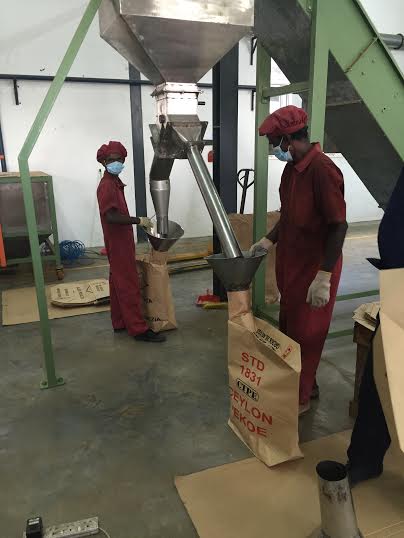
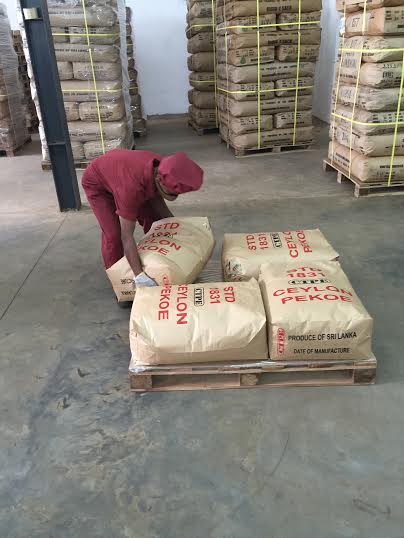
Many tea factories also make their own tea bags. These teabags are going to New Zealand. Much of the work here is done by hand.
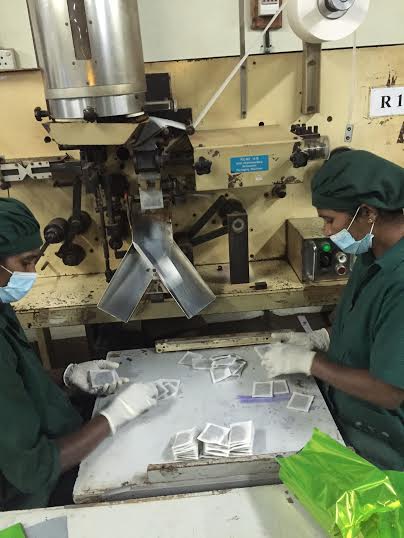
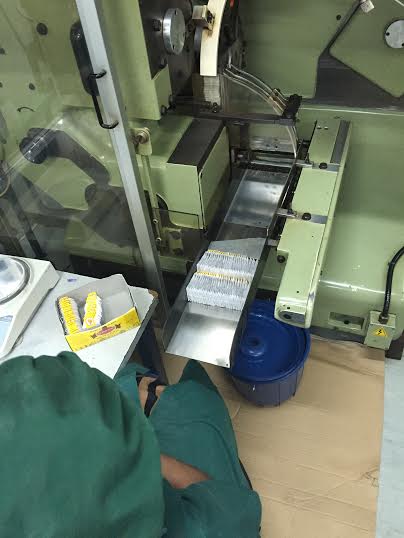
Here is a worker gluing the tea bag boxes shut.
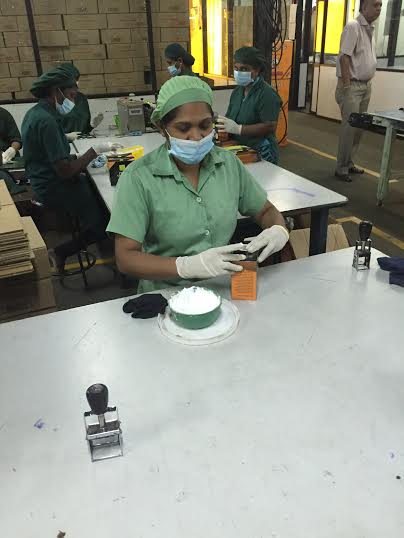
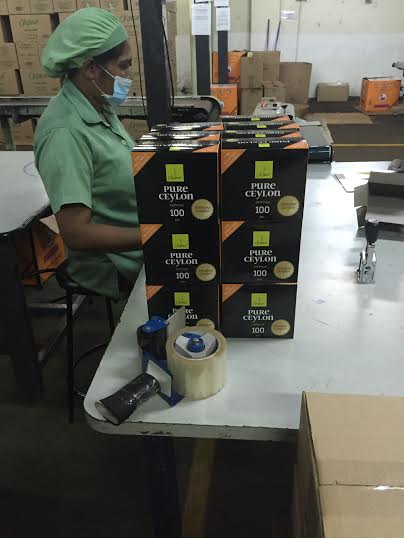
This tea factory in Colombo ships 40 foot containers of tea to Japan, England, and the Middle East. The Middle Eastern countries buy much of the Ceylon tea; however, due to conflicts and wars in this region, tea exports were down for Sri Lanka this past year. 
It’s all ready to go somewhere around the world!
Did you know how much time and labor and care went into your cuppa? Enjoy!





















